Resources
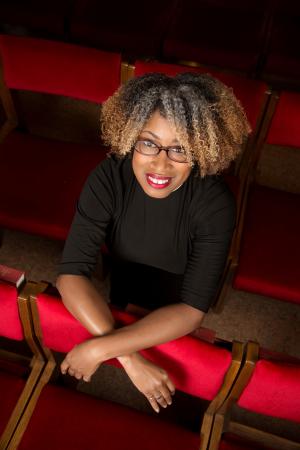
Wil Gafney Associate Professor of Hebrew Bible Brite Divinity School When and where I enter, in the quiet, undisputed dignity of my womanhood, without violence and without suing or special patronage, then and there the whole Negro race enters with me. Anna Julia Cooper Student enters. Looks at me, looks at other students, looks back at me. Is this room 101? Looks at me, looks at other students, looks back at me. Is this Hebrew? Looks at me, looks at other students, looks back at me. Are you teaching it? There is no place that race is not present and...

Dr. Molly Bassett Associate Professor of Religious Studies Georgia State University By the time you read this, I will have met the students in “Religious Dimensions in Human Experience: Between Animals and Gods.” In this completely redesigned dual-level (grad/undergrad) course, we will explore how people can know a single animal—the...
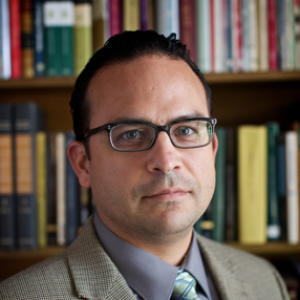
Gregory L. Cuéllar, Ph.D. Assistant Professor of Old Testament Austin Presbyterian Theological Seminary My introduction to Old Testament course has served as an experimental site for decentering racializing master-narratives, especially those that have contributed to the marginalization of the Other in the Texas-Mexico Borderlands. As a Latino biblical scholar, decentering represents an important pedagogical tactic that is shaped and informed by various forms of critical theory, postcolonial theory, and archival studies. This theoretical apparatus also draws heavily upon a lived experience of marginalization as an ethnic-Mexican in the Texas-Mexico Borderlands. Moreover, the present racial crisis in U.S. society has made...

Nancy Lynne Westfield Associate Professor of Religious Education Drew Theological School Teach students where they are! This forthright adage is deceptively difficult. The question becomes – where are they in proximity to my own location? In other words, what does it mean for the effectiveness of my teaching if the.
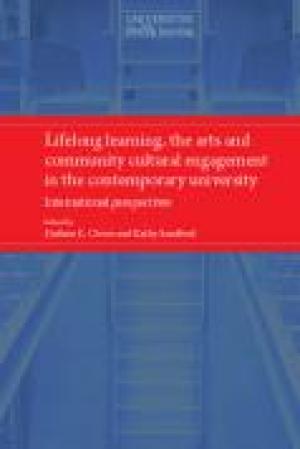
How might arts-based teaching, learning, and research transform education? This question is explored by demonstrating that arts-based methods and aesthetic pedagogies critically and creatively communicate, teach, make meaning, uncover, and involve students in learning activities. While prevailing attention in the academy is placed on science, math, business, and technology, the collective aim of this volume is to highlight the imaginative practices and creative voices that address the potentials, tensions, and challenges that educators face in working through and within the confines of higher education (7). The editors, Clover and Sanford, draw on the expertise of educators from North America, Europe, and Africa who work in areas as diverse as religious conflict, civic engagement, teacher education, literacy, theater, museums, dance, and diversity training. The authors demonstrate through varied examples and commonly held convictions that arts-based methods, grounded in social relevance and educational theory, prepare and engage students to develop self understanding and attend to pressing political issues. The twelve, primarily co-authored, essays are organized into three sections: “Arts-based Teaching and Learning”; “Arts-based Research and Enquiry”; and “Community Cultural Engagement.” Part One begins with five chapters highlighting examples of arts-based teaching within university settings. Noting the weight placed on traditional assessment and evaluation, the ubiquity of text-based learning, and the stress on technical rationality at the expense of other ways of knowing, the authors convincingly illustrate how the arts provide alternative spaces for learning that can expand student learning rather than diminish it. Skills for engaged citizenship in connection with global and local debates are explored through shared art making, while music is examined as a mobilizing force for activism. Story drama facilitates embodied ways of learning and imaginative writing “turns the gaze” outward to help marginalized student “speak.” Arts-based pedagogies address real problems, help students ground concepts with their own lived experiences, and build communities of learners, while performance-based results synthesize knowledge. The three chapters in Part Two discuss how arts-based research, which makes use of the arts in the collection, analysis, and dissemination of data, provides researchers with a broader palette of investigative and communication tools with which to garner and relay a range of social meanings (82). For example, theater and drama action-based research is employed by university researchers to assess stress among staff within their work place. Doctoral candidates use collage to tap into extra-rational ways of knowing in order to enhance and clarify their research projects. Dissertation advisors act as midwives supporting the use of arts-based research demonstrating that it is both rigorous and evocative in that its purpose is often to raise consciousness and compel, rather than simply to convince or persuade. At the heart of arts-based inquiry is a radical politically-grounded statement about social justice and control over the production and dissemination of knowledge (81). Part Three explores community cultural engagement and the arts. Issues related to racism and diversity awareness in Canada, religious conflict in Northern Ireland, and lifelong learning and cultural engagement in a museum in Scotland are examined through arts-based methods. In these varied examples boundaries between academy and community, practitioners and experts, access and privilege, are diffused. Instead, the authors point to the benefits of working beyond disciplinary silos in order to dismantle elitism, classicism, and notions of art for art’s sake. This book is written for all who would like to work beyond normative structures of higher education by using creative arts-based methodologies and practices. It is for those who wish to collaborate with community artists and cultural institutions and for those who seek ways to unite affective and cognitive learning by engagement with and through the arts. As the editors assert, the arts have potential for augmenting the human aesthetic dimension, rupturing categories of how the world is seen, and imagining the world as it might be.
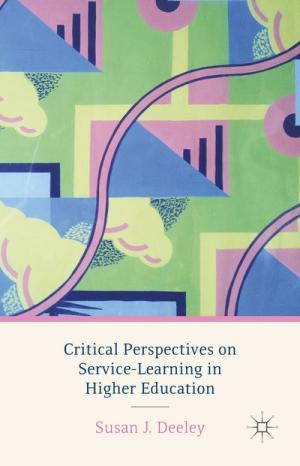
Service-learning, as a valued curricular support to learning, has received attention in institutions of higher education as an approach that provides students with social and academic capabilities for their future careers. The concept of service-learning has been around for centuries in the American academy, but higher education in Europe has not fully embraced service-learning as an innovative pedagogy to better prepare graduates for a global workforce. Research on service-learning has mainly focused on the benefits students receive, and how to organize service-learning to produce these benefits. Author Susan Deeley suggests “[moving] away from attempts to ‘prove [service-learning] works’ towards a more sustainable approach of improving how it works” (31). Critical Perspectives on Service-Learning in Higher Education offers a pioneering voice in the field of service-learning because the author practices what she preaches. She addresses the role of the teacher in service, offering practical strategies to facilitate critical reflection and academic writing, and tips for writing critical incidents and reflective journals to enable students’ “lifelong critical development” (8). The author constructs a theoretical paradigm with guidance on how to design, implement, and accomplish service-learning. Through the analysis of a theoretical perspective, Deeley offers multiple practical service-learning applications, including some from personal experience, both in local and international settings. The author does not intend to solve the critical need for innovation in teaching across the disciplines; rather, she offers learning theories, ideas, and perspectives for the regard of service-learning as a critical pedagogy that fosters agency and empowers students to explore on their own terms with guidance from faculty. Each chapter can stand alone or be used as a resource for teaching and learning. The book is divided into two major sections: (1) theory and (2) practice grounded in field experiences. In search of an inclusive view of service-learning, the first section (chapters 2 to 4) engages the reader in defining “service-learning” through a theoretical and philosophical lens, presenting an extant list of definitions and considerations that raise questions about service-learning’s “suitability” as a critical pedagogy. The second section (chapters 5 to 7) moves toward the practical application of service-learning “[which] involves students as active learners, constructing meaning in order to make sense of their experiences” (103). Students experience a “transformation” in the process of reflecting critically on their beliefs, opinions, and values. The research includes journal excerpts from eight students over the course of seven years showing how service-learning works in community settings. The importance of summative co-assessment is underscored for facilitating a democratic approach to learning that helps students master and articulate skills which are transferable to the workplace. While only three pedagogical theories are reviewed (traditional, progressive, and critical), the discussion provides an approach to enhance the scholarship of teaching (Boyer, Scholarship Reconsidered: Jossey-Bass, 1990). This approach is advanced by Deeley’s explanation of practices used in critical reflection. Even though the book was written from an international viewpoint, the service-learning experiences only take into account two countries: the United Kingdom and Thailand. Thus, additional approaches from around the world would enhance the global perspective. This book is an excellent resource that would benefit faculty members and administrators collaborating to integrate this “powerful pedagogy” as a complement to or replacement for traditional forms of teaching and learning.
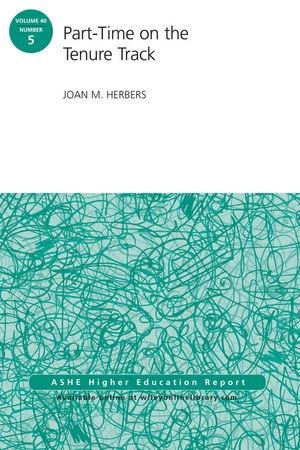
At many institutions of higher education, tenure-track faculty positions are exclusively full-time positions, while part-time appointments are for contingent faculty only. Some schools, however, use job-sharing, joint appointments, phased retirement, and other modes to make part-time positions available for tenured and tenure-track faculty members. In Part-Time on the Tenure Track, Joan M. Herbers argues that part-time tenure-track models can benefit both faculty members and the institution. Through the first half of the book, Herbers gathers and analyzes both quantitative and qualitative data on existing part-time tenure-track (PTTT) faculty. These data show that PTTT faculty report higher levels of job satisfaction than their full-time counterparts. PTTT appointments are most common in medical schools, but there are currently eight thousand PTTT faculty across all institutions with tenure systems (5, 22). While flexibility for child-rearing and other family commitments is a common reason faculty seek out PTTT work, it is by no means the only one. Mid-career faculty may pursue consulting or other interests, late-career faculty may step down job obligations in preparation for retirement, and faculty at any stage can face medical crises or other temporary conditions that make PTTT work especially attractive. Most of the junior faculty in Herbers’ analysis eventually receive tenure and hold full-time appointments. In the second half of the book, Herbers advocates for the wider implementation of PTTT positions by addressing their benefits and challenges, providing policy recommendations, and proposing best practices. Herbers asserts that academia has long been driven by an “ideal worker” model that assumes faculty serious about their careers will work only full-time. Thus, along with the technical considerations of salary and benefits, teaching and research obligations, involvement in shared governance, and access to faculty development opportunities, faculty considering PTTT work must also reckon with cultural assumptions that privilege the full-time worker. Yet PTTT work provides welcome flexibility to faculty at various stages of life, including those who might otherwise resign their positions (91). Institutions receive the benefits of satisfied and often extraordinarily dedicated workers (91-92). The most vexing and still-unresolved problem acknowledged in the book is just what constitutes “part-time” work. Telling the story of her own job-sharing arrangement, Herbers recounts that she and her spouse each worked forty hours per week – the standard American full-time work week – in their half-time positions and received together 1.4 salaries (2). She found that schedule to be consistent with the other PTTT faculty she interviewed (100). To be sure, faculty work can be difficult to quantify, since faculty productivity is not usually measured in hours worked. Even so, PTTT positions may reduce compensation for faculty more than they reduce institutional obligations, a pitfall for workers that is both policy- and culture-driven. Part-Time on the Tenure Track is a succinct yet comprehensive look at a little-known model for faculty work. The book will be an especially helpful resource to administrators who write policies and negotiate contracts, as well as to faculty members who may be considering part-time appointments.
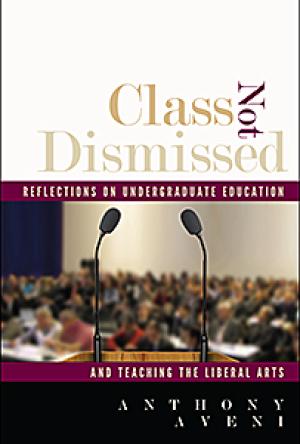
Entering his career as a high-flying yet narrowly trained graduate researcher in astronomy, Aveni’s engagement with students in his discipline and in the interdisciplinary context of liberal arts education has seen his own research flourish -- as indicated by his full title as Russell Colgate Distinguished Professor of Astronomy, Anthropology, and Native American Studies at Colgate University. That this flourishing has been driven by continually seeking ways to entice his students to enjoy and collaborate in learning and research, rather than by dint of solely private endeavor against the grain of his teaching commitments, is marvelously set out in his tales of fieldtrips, flunked comet observations, and explosive co-teaching assignments. Teachers of religion and theology may find themselves under increasing pressure to justify their place in the liberal arts context. Aveni shows clearly how imagination and good teaching practices can both competitively enhance a discipline’s standing and co-operatively benefit collegial efforts in other areas. My particular interest in the book arises from the challenge of leading general education redesign efforts at an institution where religion and theology are deeply cherished. I have needed to imagine how other disciplines can enrich my teaching of theology as integral to a liberal arts education. Aveni, with a lifetime of experience, has been helpful both practically and philosophically as I approach my local task. For example, where we emphasize interdisciplinary integration with some co-teaching and team teaching, Aveni looks at those arrangements as more beneficial when disintegrative – that is, when conflict between teachers generates a learning opportunity for students. Those not yet inducted to the professional discourse on general education and the liberal arts will find this text a winsome entry, shorn as it is of the social science research-speak that can clog the fluency of that vital conversation. Aveni is a dedicated practitioner, demonstrating in his own prose the liberal arts skills that should be demanded even of those in STEM. Aveni questions the commodification of education in his last full chapter: “Education just isn’t a commodity, and I don’t think students in the midst of a classroom experience can fully judge its value” (175). He is, at the same time, also able to take the long view on teaching evaluations to recognize their relative worth. He is not a traditionalist in the sense of insisting on a classical western canon, claiming that its proponents, such as Allan Bloom, are “many whose backgrounds demonstrate a profound lack of inquiry into cultural ideals other than their own” (183). Readers will be rewarded with this kind of punchy delivery that invites learning by agreement or disagreement, but not through over-complication and obfuscation. Aveni writes as a generous peer. He is quick to recognize the importance of senior mentors, alongside mundane realities of budgetary constraints, innovative grant-seeking, and teaching driven by research. Throughout, the author’s wit and humor stand out, but readers will be struck most of all by his care for his students.
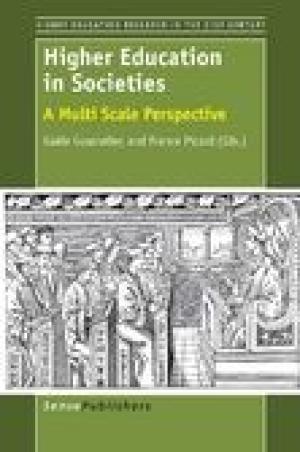
This book contains an introduction by the editors and eleven papers from the Consortium of Higher Education Researchers (CHER) conference in Lausanne in September, 2014. The first five papers address arguments over the rationales for public funding of higher education, especially in current political contexts: “How Do University, Higher Education and Research Contribute to Societal Well-being?” by Michèle Lamont, “A Persian Grandee in Lausanne” by Sheldon Rothblatt, “A New Social Contract for Higher Education?” by Peter Maassen, “Higher Education and Public Good: A Global Study” by Simon Marginson, and “Defending Knowledge as the Public Good of Higher Education” by Joanna Williams. The remaining six papers focus on regional or national developments: “Partisan Politics in Higher Education Policy: How Does the Left-Right Divide of Political Parties Matter in Higher Education Policy in Western Europe?” by Jens Jungblut, “Access Equity and Regional Development: a Norwegian Tale” by Rómulo Pinheiro, “Shrinking Higher Education Systems: Portugal, Figures, and Policies” by Madalena Fonseca, Sara Encarnação, and Elsa Justino, “Pathways to Higher Education in France and Switzerland: Do Vocational Tracks Faciliate Access to Higher Education for Immigrant Students?” by Jake Murdoch, Christine Guégnard, Maarten Koomen, Christian Imdorf, and Sandra Hupka-Brunner, “The Development of the Québec Higher Education System: Why At-risk College Students Remain a Political Priority” by France Picard, Pierre Canisius Kamanzi, and Julie Labrosse, and “Engineering Access to Higher Education through Higher Education Fairs” by Agnès Van Zanten and Amélia Legavre. The editors ground the collection in social contract theory, specifically the claim that higher education should foster equality of opportunity (2). Many of the chapters discuss how that goal is being problematized and privatized by political pressure to emphasize education’s economic benefits to individuals and society in a knowledge-based economy in place of other kinds of personal and public goods, such as an informed citizenry. These political shifts have the effect of calling peer review into question as the standard for evaluating academic research because different generations of researchers may emphasize different standards and measures of performance, and because public managers impose their own criteria (13). These articles document some paradoxical developments, such as declining student demand for science and engineering courses in some countries (139). They also illustrate how the increasing internationalization of higher education standards, through processes internal to the European Union and also due to the rising prominence of international rankings, puts disproportionate pressure on humanistic disciplines that tend to emphasize national or regional topics (12). Higher Education in Societies provides an important reminder of the crucial role of national politics in formulating the goals and ideals, as well as the funding, of higher education. For this reader, it highlights by omission the unusual situation of American academics like myself who work for private colleges and universities, which disproportionately dominate the teaching of theology and religion in the U.S. (A complementary discussion of theology and religious studies in European universities appears now in Christoph Uehlinger’s “Is the Critical, Academic Study of the Bible Inextricably Bound to the Destinies of Theology,” in Open-Mindedness in the Bible and Beyond [Korpel and Grabbe: Bloomsbury T & T Clark, 2015], 287-302).

Dr. Molly Bassett Associate Professor of Religious Studies Georgia State University I wish I could tell you exactly what I’ll be doing on the first day of my new course. But I can’t. What I can say is that the syllabus is mostly finished, and I’ve scheduled meetings with the.
Wabash Center Staff Contact
Sarah Farmer, Ph.D
Associate Director
Wabash Center
farmers@wabash.edu